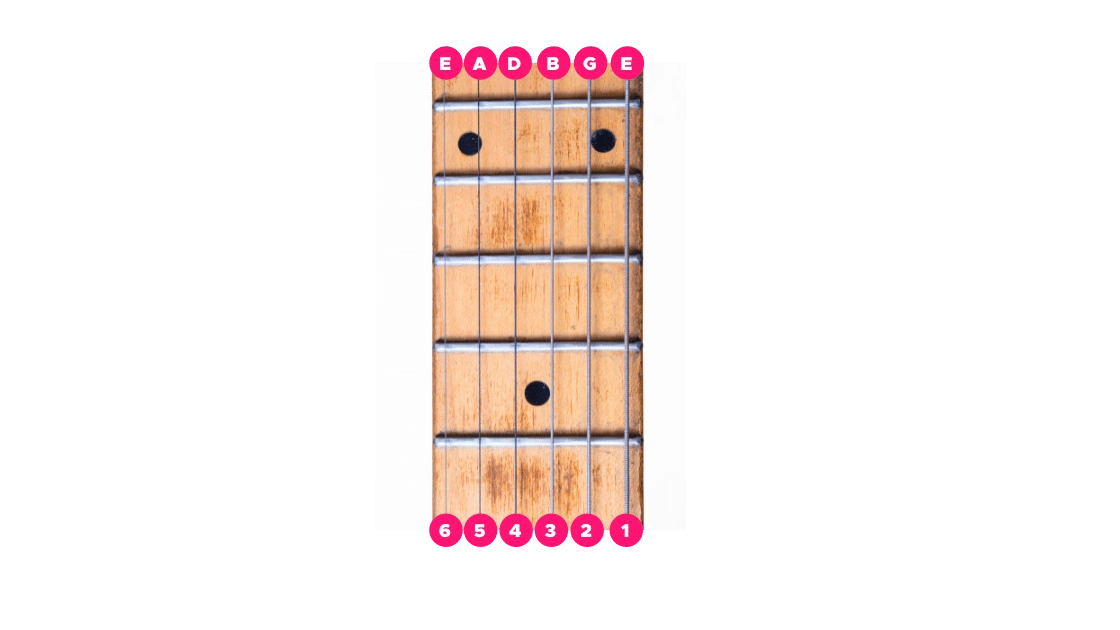Learning the guitar strings is one of the first things you learn to understand the guitar. The standard classic guitar has only six strings, making it reasonably easy to remember.
However, when you are a beginner, you are bound to face some confusion regarding the order of strings.
Knowing the guitar strings like the back of your hand is essential if you wish to be a master guitarist. It is the first thing you should focus on when you start learning the guitar or taking guitar courses. If you ever wish to achieve the heights of Jimi Hendrix, Brian May, or Jimmy page, then keep reading.
- What is the Fretboard layout?
- Different Methods
- Conclusion
- FAQs
- 1. What are the best guitar strings to use on bass or electric guitar?
- 2. Which type of string works better for playing heavy metal music: nylon, gut, or steel?
- 3. How often should I change my guitar strings?
- 4. Is there any difference between a bass or electric guitar's round wound and flat wound string gauge sizes?
What is the Fretboard layout?

The standard classical guitar has six strings. The thinnest string (the 1st string) is considered the 'top string' of the guitar. However, when you hold the guitar across your body, it's actually on the bottom.
Also, as the 1st string, the 6th string (the thickest string) is described as the 'bottom' string. It's the top string when you hold the guitar to strum.
The strings on the fretboard are arranged in the order of pitch of notes rather than their physical position. You might have to do some standard tuning before you start playing.
This applies to most stringed instruments. Please don't fret about it; we'll discuss some tricks to help you remember the string order.
Different Methods
Remember the Guitar Strings in Order Learning the names of guitar strings seems like a beginner activity, but you'd be surprised how many people mess it up.

There're quite a lot of ways to remember guitar strings. You will surely find your own favorite method of remembering guitar strings from the methods below.
1. The Acronym method
This method of memorizing the guitar strings comes right from memory experts. An acronym is a short form for a long phrase, which are, in this case, our guitar string names.
The acronym we can use in this case would be - EADGBE. This acronym gives the string order from the thickest to the thinnest. This acronym is fit for the classical acoustic guitar. And, if it's the bass guitar string names, you can use something like - GDEA
2. The Mnemonic Method
A mnemonic device is a memory technique that helps recall and retain information. If the acronym method condenses long phrases to short form, the mnemonic device does the opposite. It converts short forms to long phrases. So you have to use the names of the strings as the first letter of each word in your phrase.

Mnemonics to remember order for acoustic guitar strings
"Eat All Day Get Big Easy"
"Eat All Dead Gophers Before Easter"
"Elephants And Donkeys Grow Big Ears"
"Even Average Dogs Get Bones Eventually"
"Every Acid Dealer Gets Busted Eventually"
"Every Amateur Does Get Better Eventually"
"Eddie Ate Dynamite, Good Bye Eddie"
"Eat A Dog, Get Big Ears"
There are many variations you can craft that you feel comfortable with. There's other variations to remember bass guitar strings in order as well, because the first four strings are common, we can use the same system.
Mnemonics to remember order for bass guitar strings
"Eat All Da Grapes"
"Elephants Always Do Great"
"Eat A Doughnut, Guitarist"
"Every Apple Does Good"
"Every American Eats Gatorade"
And you can craft other variations. The Mnemonic method works wonders if the phrases you craft are weird. The more crazy and unusual they are, the more memorable they will turn out, which is exactly what we need. They don't have to make sense; they just have to be catchy and unusual.
3. The Numbering Method
This is the easiest way you can employ. You have to assign a specific number to each string by its position. You can start from the top or the bottom; it's your call. An example would be, say you are following the general string order from the thickest string to the thinnest string.
You can number them as: The thickest string, considered the 6th string, is tuned to E. This is often referred to as the Low E string. The 5th string is tuned to A, referred to as the A string. The 4th string is tuned to D, referred to as the D string.
The 3rd string is tuned to G, referred to as the G string. The 2nd string is tuned to B, referred to as the B string. And lastly, the thinnest string is considered as the 1st string is tuned to E. This is referred to as the High E string.


Conclusion
People who are masters at playing the guitar have this basic element sorted. If you want to sing and play guitar simultaneously, you will be at an advantage if you memorize the strings in order.

Mastering the guitar requires you to learn a lot of advanced stuff like chords which you may learn the guitar from the We've listed three very effective methods in this article, but if all else fails you can still use the age-old mugging up approach to memorize the order of the strings.
FAQs
1. What are the best guitar strings to use on bass or electric guitar?
Electric guitar comes in varying thicknesses. The lightest string is .008 inch, and the heaviest string is .056 inches. The strings play a decisive role in playability and sound.
The lighter strings are easy to play while the heavier ones are harder. If you want to play faster leads, you should go for lighter strings, but if you're going to play something like Heavy Metal, you should consider the heavier strings.
2. Which type of string works better for playing heavy metal music: nylon, gut, or steel?
Steel strings are considered best for playing metal music. Specifically, nickel-wound steel strings are exceptional. These strings have a steel core and are wrapped around with Nickel. These work the best because Nickel has an excellent sound profile.
3. How often should I change my guitar strings?
It would be best to consider changing your guitar strings once every 3 months. It would help if you considered changing your guitar strings because
Strings won't stay in tune
Strings are discolored
The strings feel stiff
The tone is dull, which produces bad melodies
4. Is there any difference between a bass or electric guitar's round wound and flat wound string gauge sizes?
Most guitar strings are identical. They have a central core wire with a wrapped wire. The real difference lies in the wrap itself. The flat wound strings have a steel core with outer wrap wire that is flattened. This gives a more muted sound to the string.
These are used mainly by jazz guitarists. The round wound strings have a steel core with standard wrap wire around the core. They produce a brighter tone and are cheaper than flat wound strings.


Comments